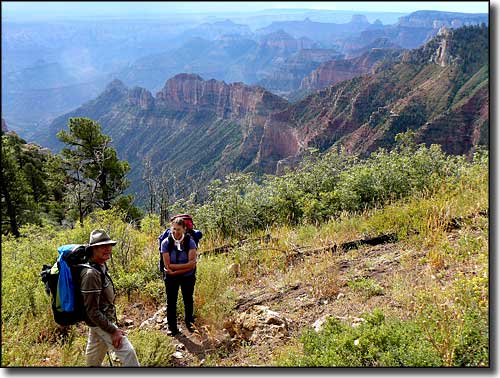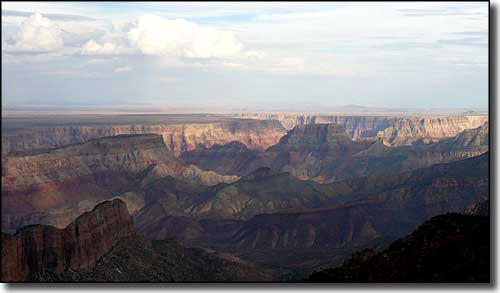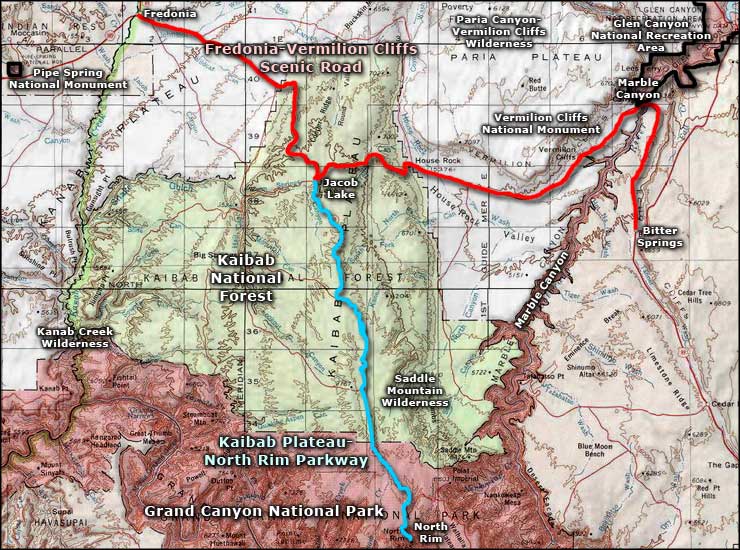
Saddle Mountain Wilderness

A southeastern view from Saddle Mountain Wilderness
Saddle Mountain Wilderness is a 40,610-acre property straddling the eastern edge of the Kaibab Plateau in northern Arizona. Elevations range from 6,000' on the rim of Marble Canyon to about 8,000' at the top of Saddle Mountain (which is actually the highest ridge on the property). This is rugged countryside characterized by lines of steep and very steep cliffs rising above narrow drainages. Saddle Mountain itself drops off in sheer walls at its southern end to form the Nankoweap Rim.
The highlands tend to be covered with a mixed conifer and pine forest with aspen in some areas, while the lower areas tend to the juniper, pinon pine and sagebrush side of things. There are 3 year-round springs in the North Canyon area and 1 in the South Canyon. The North Canyon springs feed into a perennial stream that is used by the endangered Apache trout for spawning purposes. You'll find mule deer, turkey and grouse out here, and lots of rattlesnakes. Bison can sometimes be found in the area, too.
Most trails accessing the Saddle Mountain Wilderness start in either House Rock Valley or at the top of the Kaibab Plateau. One of them, the Saddle Mountain Trail, parallels that top ridge for about 4 miles, giving some great views of the Vermilion Cliffs, the Marble Canyon Gorge, House Rock Valley and the Cocks Comb Ridge before heading into Grand Canyon National Park. There's also a 4-mile trail along the bottom of South Canyon and a 7-mile trail along the bottom of North Canyon. Both of these trails will lead up onto the Kaibab Plateau, but the climb up that escarpment is very steep. In many places you'll come across ruins that were built and then abandoned by the Sinagua people 900 years ago. If you come across something in these areas that catches your interest, enjoy it and then leave it where you found it.
Because of the location and the beauty of the area, Saddle Mountain Wilderness sees relatively heavy human use. However, the place gets a break in the winter and early spring when heavy snow can make access difficult. At times in the summer though, peak usage can trigger Forest Service closures: you might want to call ahead to be sure.

A view into the Grand Canyon from Saddle Mountain Wilderness

Saddle Mountain Wilderness is in the Kaibab National Forest section on the center of this map
